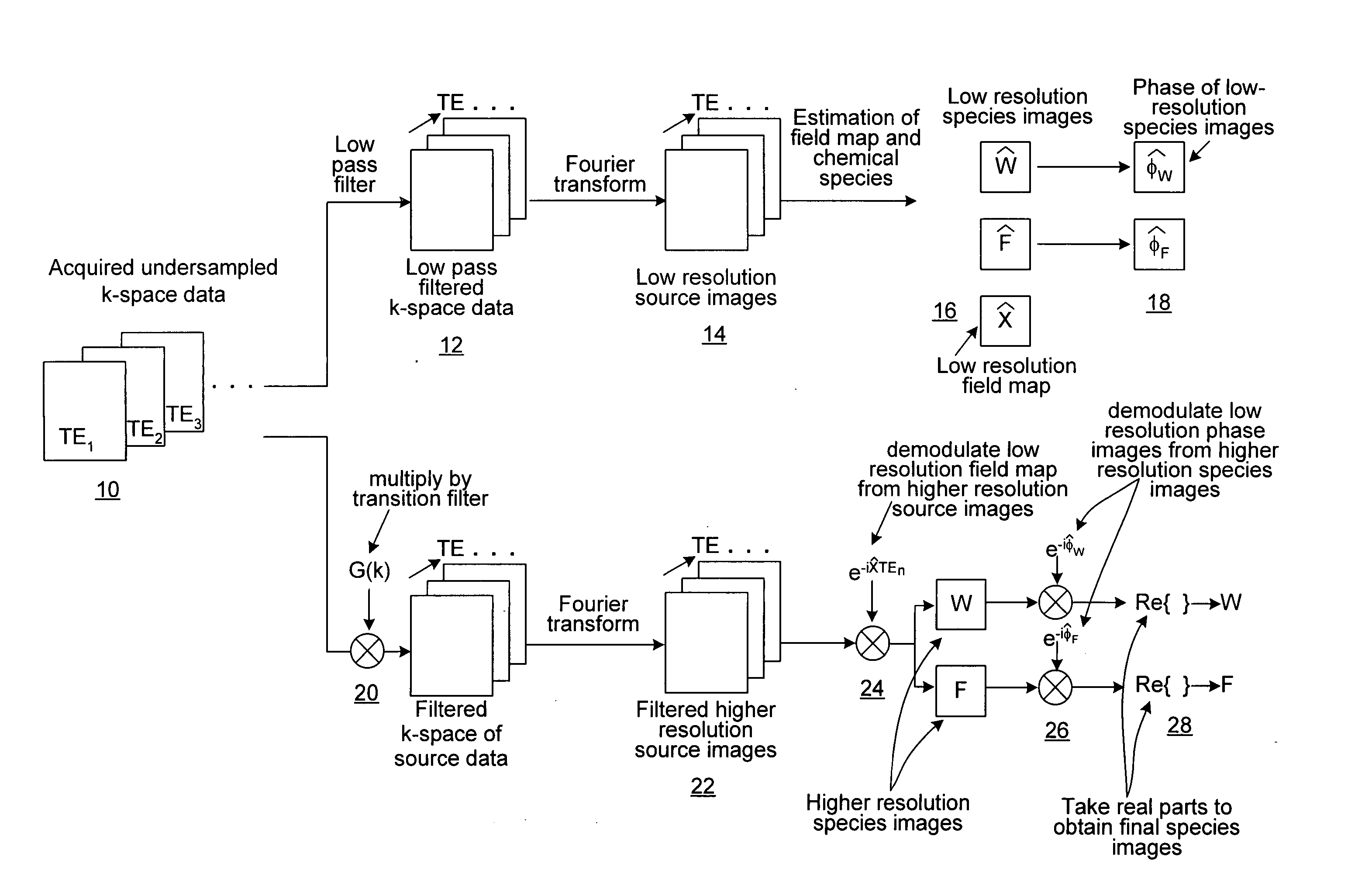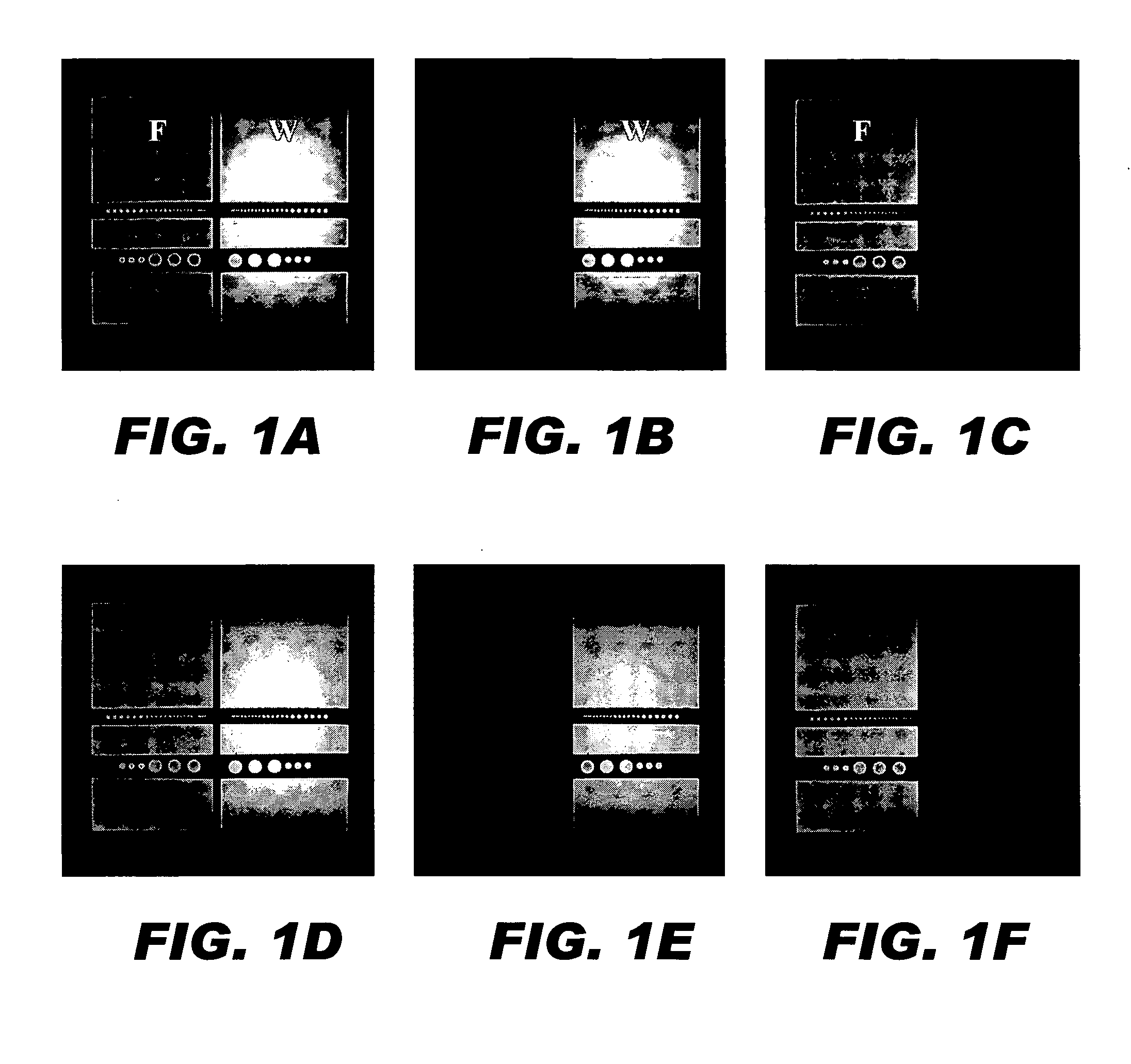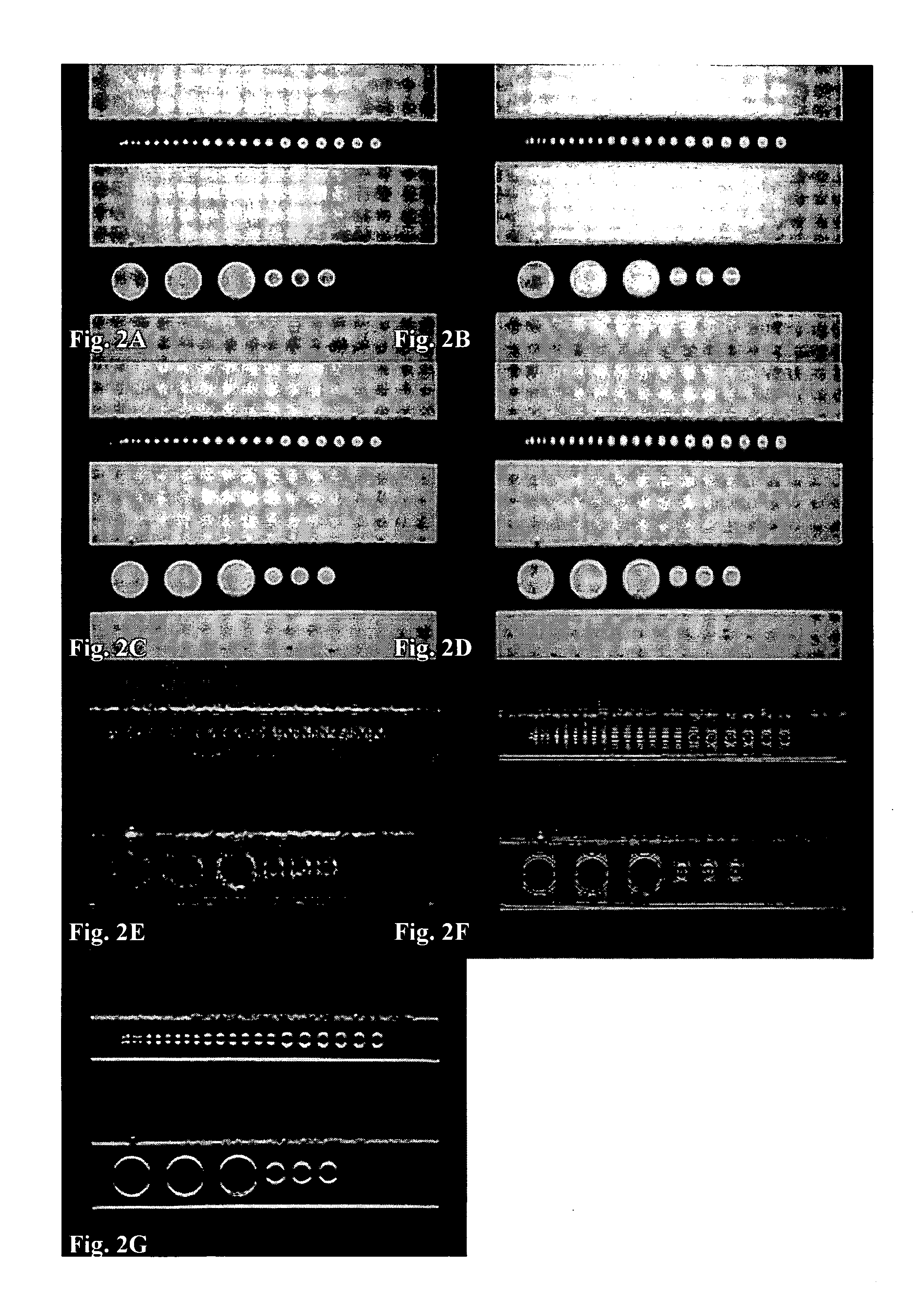Homodyne reconstruction of water and fat images based on iterative decomposition of MRI signals
a reconstruction and water and fat image technology, applied in the field of magnetic resonance imaging (mri), can solve the problems of uniform fat separation, inability to fully characterize the theoretical noise performance of water-fat separation methods, and inability to decompose water from fat with dixon methods, so as to achieve the resolution of calculated water and fat images.
- Summary
- Abstract
- Description
- Claims
- Application Information
AI Technical Summary
Benefits of technology
Problems solved by technology
Method used
Image
Examples
Embodiment Construction
[0022] As noted above, reliable separation of water from fat using “Dixon” approaches has shown renewed interest in recent years, as it provides uniform separation of water from fat despite the presence of B0 and B1 field inhomogeneities. The method described in co-pending application Ser. No. 11 / 124,041, supra, acquires three images, each with a slightly different echo times (TE), and analytical or least squares methods are then used to decompose these “source” images into separate water and fat images. Extension to multi-coil applications has also been described recently.
[0023] Partial k-space acquisitions in the readout direction are important for applications that must reduce the minimum TE, first moment phase shifts from motion or flow in the readout direction, and the minimum TR. Short TR's are essential for good image quality for Dixon-SSFP applications to prevent banding artifacts while maintaining high spatial resolution in the readout direction. Partial readout acquisitio...
PUM
 Login to View More
Login to View More Abstract
Description
Claims
Application Information
 Login to View More
Login to View More - R&D
- Intellectual Property
- Life Sciences
- Materials
- Tech Scout
- Unparalleled Data Quality
- Higher Quality Content
- 60% Fewer Hallucinations
Browse by: Latest US Patents, China's latest patents, Technical Efficacy Thesaurus, Application Domain, Technology Topic, Popular Technical Reports.
© 2025 PatSnap. All rights reserved.Legal|Privacy policy|Modern Slavery Act Transparency Statement|Sitemap|About US| Contact US: help@patsnap.com



